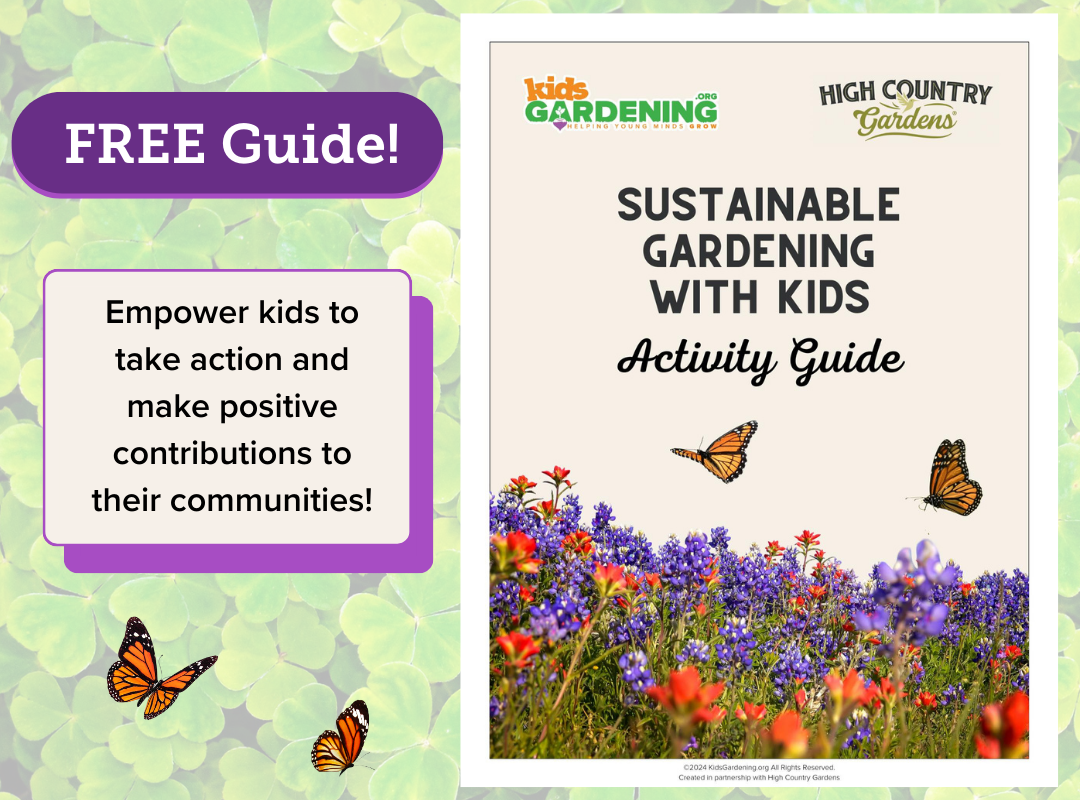Materials:
A collection of age-appropriate garden-related books. Looking for ideas? Check out the American Horticultural Society and National Junior Master Gardener Program’s Growing Good Kids - Excellence in Children's Literature Awards.
Instructions
Looking for literature ideas? Check out the American Horticultural Society and National Junior Master Gardener Program’s Growing Good Kids - Excellence in Children's Literature Awards.
Getting kids excited about reading and writing provides them with many long-term benefits, but is not always an easy task. Why not use their love for garden activities to generate enthusiasm for literacy? Here are some ideas for bringing books to life through the garden and garden activities:
Design a theme garden around a book.
For example, create a Peter Rabbit Garden using some of the vegetables mentioned in The Tale of Peter Rabbit by Beatrix Potter and include a few little rabbit statues or doll jacket scarecrows. Who knows, you might even end up with a real-life bunny (and learn how farmer McGregor felt)! Here are few additional suggestions of cool books that are easy to incorporate into a fun garden design:
Tops and Bottoms by Janet Stevens– Grow your own tops (lettuce), bottoms (carrots and radishes) and middles (corn).
Pumpkin Circle by George Levenson – There is nothing more magical than growing your own Halloween Jack-o-Lantern.
Planting a Rainbow by Lois Ehlert – Plant your own colorful space with blooms that represent all colors of the rainbow.
Oliver’s Vegetables by Vivian French- Try a variety of new vegetables with Oliver. Don’t forget the potatoes!
Growing Vegetable Soup by Lois Ehlert – You too can grow all the ingredients for a tasty vegetable soup.
Create a special reading corner in your garden.
Let your child help plan this special nook so that it is a place he or she wants to visit and spend time in. Check out our suggestions for creating a reading garden. You could even install your own weather-safe storage space so that books are always available for your child and their friends to enjoy (the nonprofit Little Free Library® offers some design suggestions).
Read a book that involves gardening and then let your child perform the same tasks the characters completed in the book.
Here are a few suggestions:
Flower Garden by Eve Bunting – Plant a window box to give as a gift to a special friend or family member.
Jack’s Garden by Henry Cole – This classic book walks you through every step of the garden process from soil preparation to seed harvesting.
Sunflower House by Eve Bunting – Plant your own sunflower house just like the characters in this book. Don’t forget the camp out!
Diary of a Worm by Doreen Cronin- Take time to look for worms and make up some of your own stories about their lives just like the little worm featured in this book. Add a worm bin to your indoor or outdoor garden. (Check out our Make a Worm Composting Bin activity.)
Miss Rumphius by Barbara Cooney – Sow some native wildflower seeds in your community.
Collect seed catalogs
If you do not get any of your own, check with local gardeners — they usually have a healthy supply of them — or write to a seed company and ask them to send some to you. Catalogs can be fun to read and can also lead to creative writing projects and collages. Check out our idea for making a writing or art box for the garden.
Use the garden to inspire non-fiction reading.
Ask kids to brainstorm questions about their garden and then help them search for answers in garden resource books. You can also direct students to read horticultural resources to create a planting guide, to make brochures about garden plants, and to help in planning new garden areas.
Enhance your edible garden activities by participating in Heifer International’s Read to Feed program.
Heifer International’s Read to Feed program raises money through sponsored reading activities to provide hunger relief around the world. You can use the program as a way to introduce the issues of hunger and food security to your students. In addition to raising money for international efforts, you can raise your own fruits and vegetables and donate them to local food banks and/or charities.



